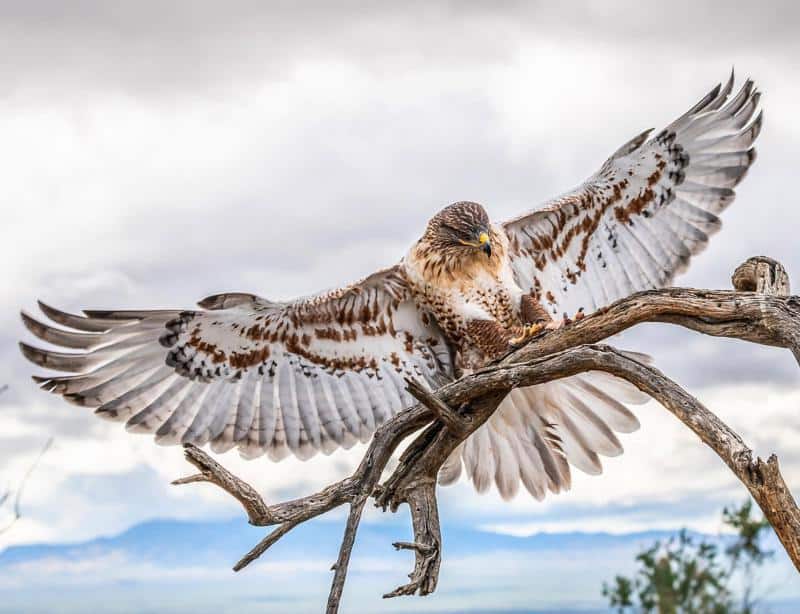Few other animal species can hold the fascination of dinosaurs. For generations, people have been fascinated and terrified by them due to their immense size, terrible fangs, and extraterrestrial look. However, what relationship do these ancient creatures have with living animals?
Do soaring sauropods and crafty velociraptors resemble birds or reptiles more? It will take looking back hundreds of millions of years to solve this puzzle.
Here’s the short response in case you’re pressed for time: Dinosaurs are considered reptiles according to DNA and anatomical evidence. But birds are the contemporary cousins of dinosaurs, deriving from a single lineage of tiny, feathered dinosaurs.
Reptiles Are the Classification of Dinosaurs
In terms of classification, reptiles are often used to describe dinosaurs. A number of criteria, including as their common physical attributes, metabolic traits, and evolutionary history, are used to classify them.
Position within the taxonomic hierarchy
The larger class of reptiles known as archosaurs, which also contains crocodiles and birds, includes dinosaurs. Their common ancestry and the existence of certain anatomical traits serve as the basis for this categorization.
The Saurischia, which contains meat-eating dinosaurs like Tyrannosaurus rex, and the Ornithischia, which includes plant-eating dinosaurs like Triceratops, are the two primary groups of dinosaurs that make up the archosaur group.
Paleontologists and evolutionary biologists have performed substantial study to support the classification of dinosaurs as members of the reptile group. Scientists have been able to put together the evolutionary history of dinosaurs and their connection to other reptiles by looking through fossil records and studying genetic data.
Same physical characteristics to reptiles
Dinosaurs are firmly classified as reptiles because they had many of the same physical characteristics. Their scaly skin, which is typical of reptiles, is one of their distinguishing characteristics. Furthermore, dinosaurs’ hip anatomy is more reptilian than that of mammals or birds, and they walked with a spreading stride akin to that of contemporary reptiles.
In addition, dinosaurs and other reptiles are related by specific physical traits, such as the existence of teeth and the form of their skulls. The general physical structure of dinosaurs still indicates their reptile ancestry, even if some of them developed to have traits similar to birds.
Sluggish, icy metabolism
Their metabolic traits are another factor that lends credence to the idea that dinosaurs are reptiles. Reptiles are renowned for having a sluggish metabolism and for needing outside heat sources to maintain body temperature.
In a similar vein, it is thought that dinosaurs had a cold-blooded physiology and a sluggish metabolism.
It is crucial to remember, however, that new evidence points to the possibility that certain dinosaurs may have had traits common to both warm-blooded and cold-blooded species, existing in the middle. This continuing discussion emphasizes how complicated dinosaur physiology is and how much more study is required to completely comprehend these animals’ metabolic capacities.
The Birds’ Evolutionary Origins
Dinosaurs with feathers connect birds and reptiles
Although it may seem like something from a science fiction film, the argument that birds descended from dinosaurs is widely accepted in the scientific world. The discovery of feathers on several dinosaur species throughout the last few decades has led to compelling evidence of the evolutionary relationship between reptiles and birds.
The idea that birds are descended from dinosaurs is further supported by the physical similarities between these feathered dinosaurs, also called theropods, and contemporary birds.
During the late Jurassic era around 150 million years ago, Archaeopteryx, one of the most well-known dinosaurs with feathers, existed. This amazing animal has traits of both a reptile and an avian.
It was a bird with feathers, wings, and a wishbone; nevertheless, it was also a dinosaur with fangs, a long bony tail, and claws on its wings. There is strong evidence supporting the evolutionary shift from reptiles to birds due to this unique mix of features.
lungs and bone structural similarities
The fact that their respiratory systems and bone structures are comparable lends further credence to the dinosaur-bird theory. Hollow bones allow for greater movement and agility, and this trait is shared by both dinosaurs and birds.
The existence of air sacs in dinosaur bones that resemble those in contemporary birds indicates that these animals had very effective respiratory systems. The development of dinosaurs into birds would have been further supported by this modification, which would have been beneficial for prolonged flying.
Furthermore, research has shown certain similarities between dinosaur and avian lungs. To provide a steady supply of oxygen during flight, both have an air sac system that extends into their bones.
The idea that birds descended from dinosaurs is further supported by this commonality in respiratory structure.
Avian ancestry is shown via cladistic analysis.
More proof that birds descended from avians has been found via the use of cladistic analysis, a technique that establishes evolutionary connections based on common traits. Researchers have created a family tree that includes birds in the dinosaur genus by analyzing the physical traits of different dinosaur species.
This method finds patterns of evolutionary divergence by considering a broad variety of traits, including dentition, bone structure, and general body form.
In one well-known study, a group of researchers at the University of Cambridge used cladistic analysis to examine the traits of more than 1,500 different dinosaur species. Their study’s findings demonstrated that birds are descended from a class of dinosaurs called theropods, which includes well-known species like the Velociraptor and Tyrannosaurus Rex.
The hypothesis that birds descended from dinosaurs is strongly supported by this discovery, which also emphasizes the use of cladistic research in determining evolutionary connections.
Direct Evidence of Bird Evolution from Fossils
The direct fossil evidence supporting the relationship between dinosaurs and birds is one of the most exciting elements of dinosaur development. Amazing new insights into the evolution of dinosaurs into extant bird species have been made possible by this data.
Birds of prey Archaeopteryx
The discovery of Archaeopteryx, an early bird that lived in the late Jurassic era around 150 million years ago, is one important piece of direct fossil evidence. Because of its distinctive mix of reptile and avian characteristics, Archaeopteryx was able to cross the gap between birds and dinosaurs.
It was avian in appearance with feathers, wings, and a beak, but it was also reptile with teeth and a long, bony tail.
Creative statistical data: Archaeopteryx’s status as a significant transitional relic in the evolution of birds has been reinforced by recent research demonstrating that it shared over 50% of its skeletal morphology with tiny theropod dinosaurs.
From dinosaurs to contemporary birds
The finding of dinosaur fossils with avian-like features provides important more evidence. Theropod dinosaur fossils, such as those of the Velociraptor and Deinonychus, have shown startling parallels to extant birds, including hollow bones, joined wrists, and a feature called a furcula that resembles a wishbone.
These results imply that these dinosaurs most likely descended from extant birds.
Creative statistical data: There is strong evidence supporting the evolutionary link between dinosaurs and birds from recent genomic investigations. Scientists have discovered genetic sequences that are shared by current birds and dinosaurs, proving a clear relationship between the two species.
Long tails and tooth loss
The loss of teeth and the emergence of a beak were two major alterations that took place during the transition from dinosaurs to birds. According to fossil evidence, early bird species progressively shed their teeth as their jaws changed throughout time to become more streamlined and beak-suitable.
Furthermore, early birds had long, reptilian-like tails, but they eventually became shorter and more bird-like.
Creative statistical data: A research that was published in the journal “Nature” discovered that the evolution of a bird’s beak and the development of its ability to fly occurred at the same time. According to the experts, a beak’s growth and the loss of teeth allowed for more effective ventilation during flying, which aided in the success and variety of birds.
The Genetic Connection Between Birds and Dinosaurs
The genetic relationship between dinosaurs and birds is among the most intriguing features of their evolutionary history. Scientists have made tremendous progress in the last several decades in figuring out this connection, which has helped to clarify the relationship between these extinct animals and modern birds.
Similar proteins and genes
Researchers have shown that birds are really descended from a class of two-legged dinosaurs called theropods via the analysis of fossils. This link is supported by genetic data in addition to morphological similarities.
Certain genes that birds and dinosaurs share have been found by scientists via examination of the DNA and proteins of contemporary birds. Strong evidence for the evolutionary relationship between the two tribes may be found in these common genes.
Indeed, a 2018 research that appeared in the journal Nature discovered that birds’ genomes still include remnants of their dinosaur ancestry. The genomes of 48 bird species and those of crocodiles and turtles, which are also thought to be close cousins of dinosaurs, were compared by the researchers.
They found that compared to reptiles, birds had more genes linked to features associated with dinosaurs, such scales and beaks.
Examining the DNA of dinosaurs
The notion of replicating extinct animals by removing their DNA from fossils may seem like something from a science fiction film, but the reality is a little more nuanced. Since dinosaur DNA is so delicate and deteriorates with time, it is very challenging to extract complete genetic information from millions of-year-old remains.
But dinosaur DNA fragments have been extracted by scientists from fossils that have been preserved, including those discovered in amber. These pieces have confirmed dinosaurs’ evolutionary link with birds and offered important new insights into the genetic composition of dinosaurs.
It’s crucial to remember that dinosaur DNA is sometimes imperfect, which makes it difficult to completely comprehend the genetic parallels and differences between dinosaurs and birds. However, even little DNA pieces from dinosaurs may provide important details about their evolutionary past.
The closest extant cousins of reptiles are crocodilians.
Although crocodilians, such as crocodiles and alligators, are thought to be the closest living cousins of birds, it’s also important to note that birds are thought to be the living descendants of dinosaurs. These reptiles and dinosaurs had a shared origin, and they still exhibit many traits from their prehistoric ancestors.
Scientists have improved our knowledge of the genetic alterations that took place during the transition from dinosaurs to birds by comparing the genomes of crocodilians and birds. In addition to highlighting their common genetic background, this comparative research has provided significant insights into the evolutionary processes that created these two populations.
Fianal Thoughts
There is an amazing relationship between reptiles and birds that can be seen in the evolutionary story of dinosaurs. Birds descended from dinosaurs more than 150 million years ago, yet dinosaurs are considered extinct reptiles since they have no living relatives.
Therefore, although it would be incorrect to speak to dinosaurs as birds in general, to refer to birds as “modern feathered dinosaurs” represents the direct descent that has been shown in both genetic research and the fossil record. In the form of more than 10,000 different bird species that still possess dinosaur DNA, dinosaurs have left a living legacy.





